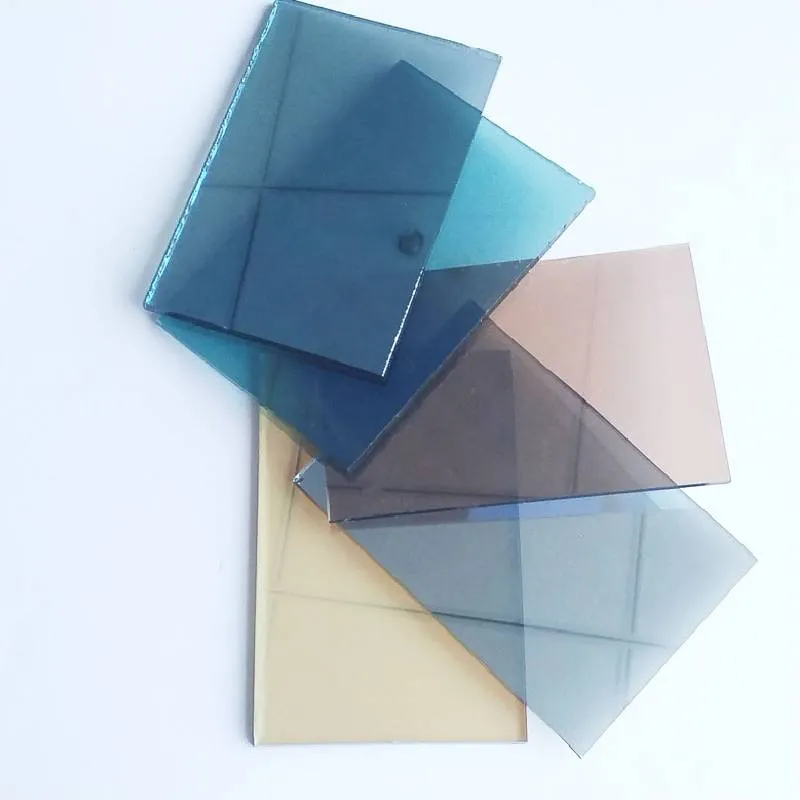The Role of Glass in Modern Building Design
In the realm of modern architecture, glass has emerged as one of the most influential materials shaping the aesthetics and functionality of buildings. Its unique properties enable architects and designers to create innovative structures that are not only visually striking but also environmentally responsive. This article explores the multifaceted roles of glass in building design, emphasizing its advantages, challenges, and future trends.
Aesthetic Appeal
One of the primary reasons for the widespread use of glass in building design is its aesthetic appeal. Glass allows for the creation of transparent surfaces that dissolve the boundaries between indoor and outdoor environments. This transparency promotes a sense of openness, giving inhabitants a connection to the natural surroundings. Buildings adorned with expansive glass facades can reflect light and color, exhibiting a dynamic visual character that changes throughout the day. Famous landmarks such as the Louvre Pyramid in Paris and the Apple Park in Cupertino, California, showcase glass as a central design element, exuding a sense of modernity and sophistication.
Natural Light and Energy Efficiency
Another crucial advantage of glass in architecture is its ability to harness natural light. Well-placed glass windows and facades can significantly reduce the need for artificial lighting, thereby conserving energy and lowering utility costs. Architects are increasingly employing advanced glazing technologies that minimize heat gain while allowing ample sunlight to penetrate indoor spaces. This balance enhances occupant well-being and comfort, creating healthier environments. Moreover, features like double-glazing and low-emissivity coatings contribute to improved insulation and energy efficiency, aligning with sustainable building practices.
Spatial Flexibility
Glass also facilitates spatial flexibility in building design. Its lightweight nature and structural advancements allow for larger spans and open spaces, giving architects the freedom to design versatile interiors. Offices, retail spaces, and residential units can be reconfigured with relative ease when glass partitions are incorporated, fostering collaboration and adaptability. This flexibility is particularly valuable in urban environments, where space constraints necessitate multifunctional designs that can evolve over time.
building design glass
Challenges and Considerations
Despite its numerous benefits, the use of glass in building design comes with its challenges. One significant concern is heat management, as excessive solar gain can lead to discomfort and increased cooling costs. Architects must carefully select glazing types and orientations to mitigate this issue, often combining glass with other materials to create a balanced facade. Furthermore, the environmental impact of glass production, including its carbon footprint, necessitates a thoughtful approach to material sourcing and lifecycle management.
Security and privacy are additional factors that architects must consider. Glass structures may compromise privacy, especially in densely populated areas, prompting the need for innovative design solutions such as frosted glass, tinted films, or smart glazing technologies that can alter transparency on demand.
Future Trends in Glass Design
Looking ahead, the future of glass in building design seems promising. Innovations such as smart glass, which can change its properties in response to environmental stimuli, are paving the way for more responsive architectural practices. Photovoltaic glass that generates energy while functioning as a building envelope is another exciting development, merging aesthetics with sustainability.
Additionally, biophilic design principles, which emphasize a connection with nature, are likely to influence how glass is used in buildings. Expansive glass walls that open up to green spaces or the integration of indoor gardens can enhance occupants' well-being and foster a stronger connection to the environment.
In conclusion, glass plays a pivotal role in modern building design, offering aesthetic appeal, energy efficiency, and spatial versatility. While challenges exist, ongoing innovations promise to enhance the functionality and sustainability of glass in architecture. As designers continue to explore the possibilities of this remarkable material, the future of building design will undoubtedly reflect a deeper integration of glass, reshaping our built environment for generations to come.
 Afrikaans
Afrikaans  Albanian
Albanian  Amharic
Amharic  Arabic
Arabic  Armenian
Armenian  Azerbaijani
Azerbaijani  Basque
Basque  Belarusian
Belarusian  Bengali
Bengali  Bosnian
Bosnian  Bulgarian
Bulgarian  Catalan
Catalan  Cebuano
Cebuano  Corsican
Corsican  Croatian
Croatian  Czech
Czech  Danish
Danish  Dutch
Dutch  English
English  Esperanto
Esperanto  Estonian
Estonian  Finnish
Finnish  French
French  Frisian
Frisian  Galician
Galician  Georgian
Georgian  German
German  Greek
Greek  Gujarati
Gujarati  Haitian Creole
Haitian Creole  hausa
hausa  hawaiian
hawaiian  Hebrew
Hebrew  Hindi
Hindi  Miao
Miao  Hungarian
Hungarian  Icelandic
Icelandic  igbo
igbo  Indonesian
Indonesian  irish
irish  Italian
Italian  Japanese
Japanese  Javanese
Javanese  Kannada
Kannada  kazakh
kazakh  Khmer
Khmer  Rwandese
Rwandese  Korean
Korean  Kurdish
Kurdish  Kyrgyz
Kyrgyz  Lao
Lao  Latin
Latin  Latvian
Latvian  Lithuanian
Lithuanian  Luxembourgish
Luxembourgish  Macedonian
Macedonian  Malgashi
Malgashi  Malay
Malay  Malayalam
Malayalam  Maltese
Maltese  Maori
Maori  Marathi
Marathi  Mongolian
Mongolian  Myanmar
Myanmar  Nepali
Nepali  Norwegian
Norwegian  Norwegian
Norwegian  Occitan
Occitan  Pashto
Pashto  Persian
Persian  Polish
Polish  Portuguese
Portuguese  Punjabi
Punjabi  Romanian
Romanian  Russian
Russian  Samoan
Samoan  Scottish Gaelic
Scottish Gaelic  Serbian
Serbian  Sesotho
Sesotho  Shona
Shona  Sindhi
Sindhi  Sinhala
Sinhala  Slovak
Slovak  Slovenian
Slovenian  Somali
Somali  Spanish
Spanish  Sundanese
Sundanese  Swahili
Swahili  Swedish
Swedish  Tagalog
Tagalog  Tajik
Tajik  Tamil
Tamil  Tatar
Tatar  Telugu
Telugu  Thai
Thai  Turkish
Turkish  Turkmen
Turkmen  Ukrainian
Ukrainian  Urdu
Urdu  Uighur
Uighur  Uzbek
Uzbek  Vietnamese
Vietnamese  Welsh
Welsh  Bantu
Bantu  Yiddish
Yiddish  Yoruba
Yoruba  Zulu
Zulu 

